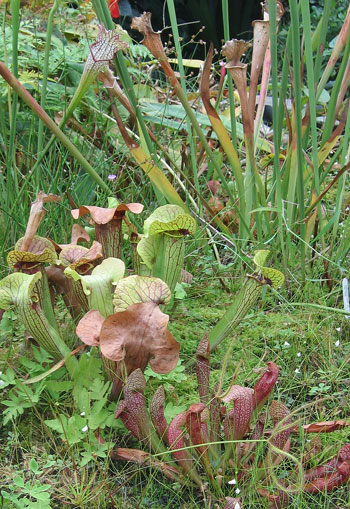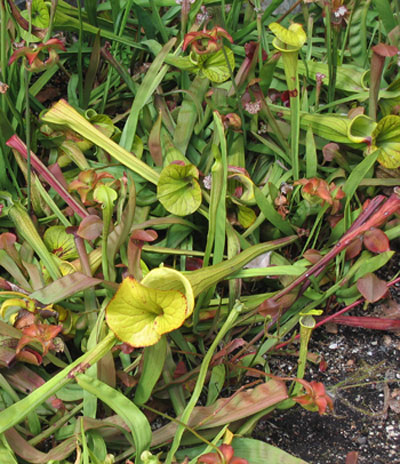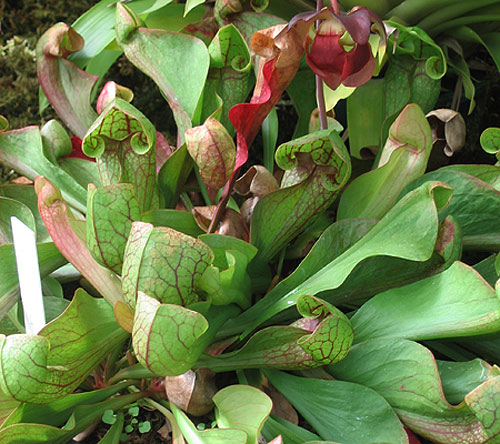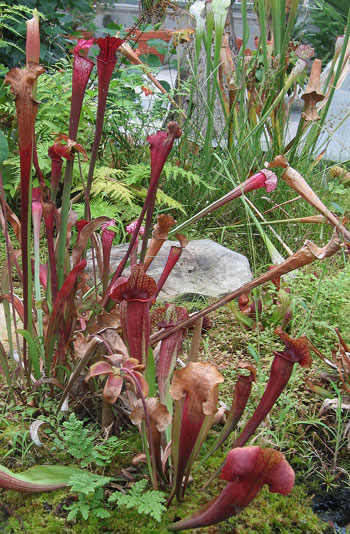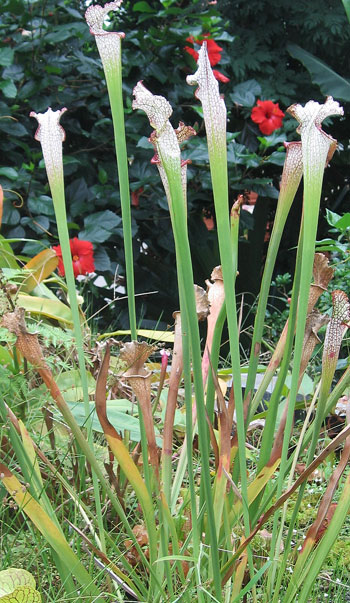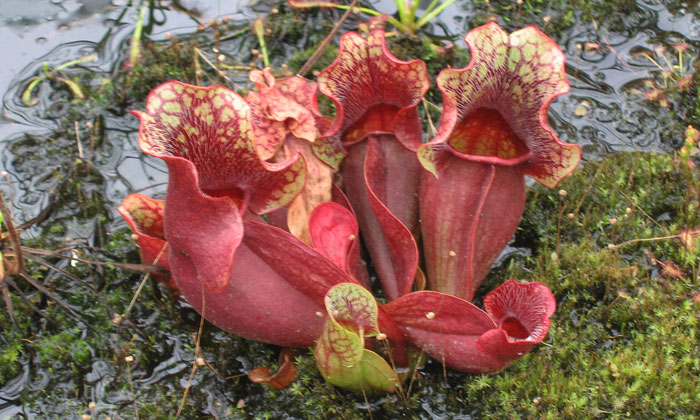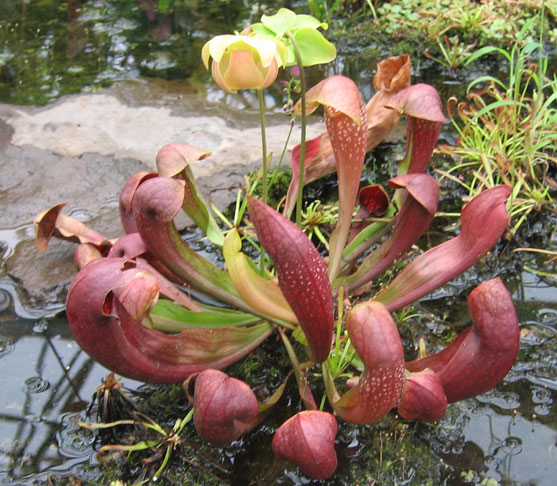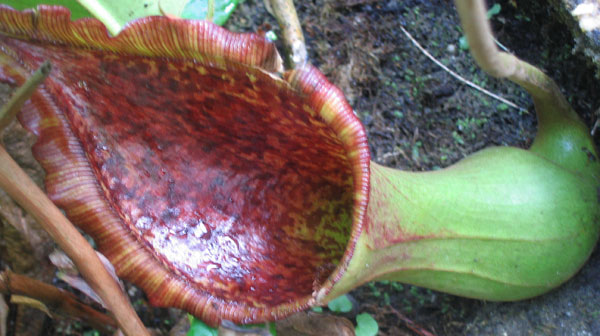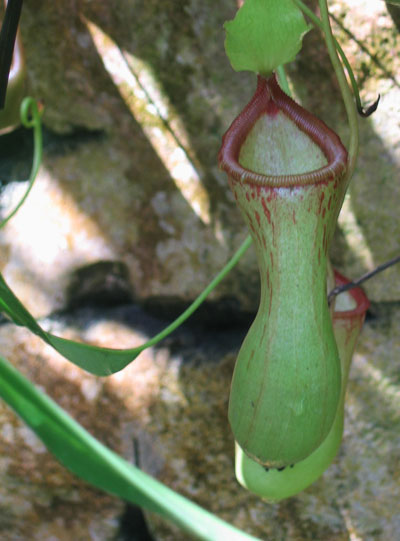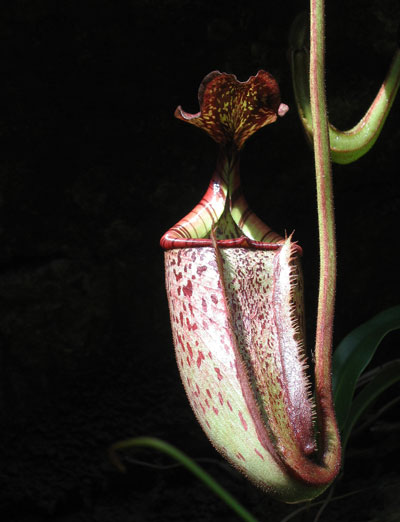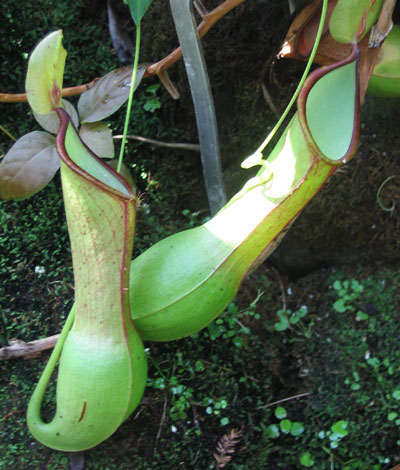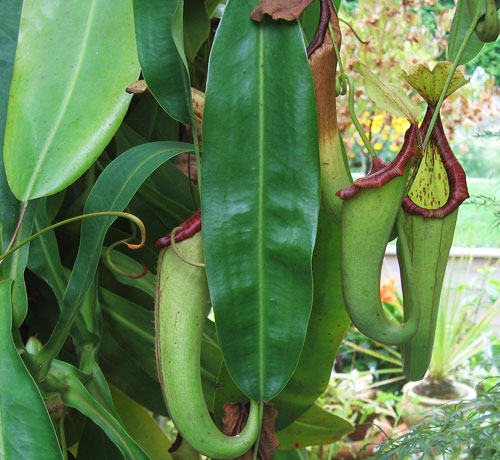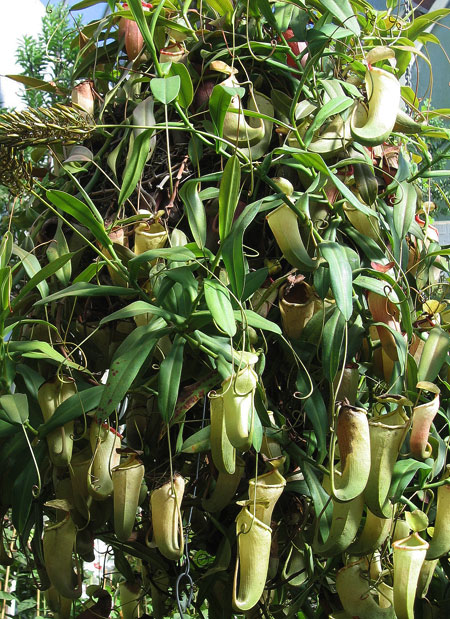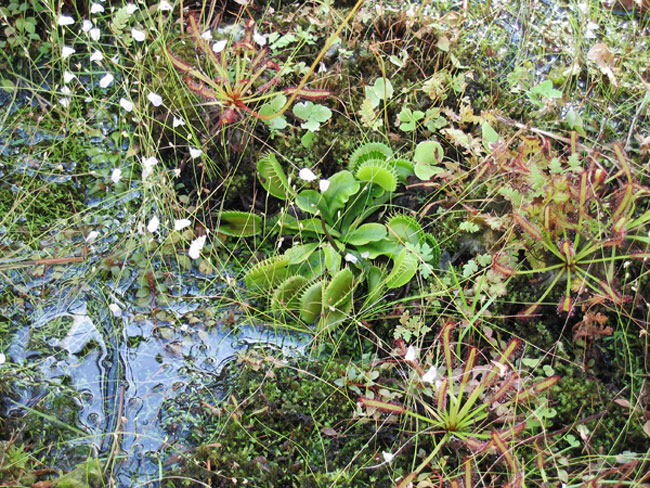| GreenGardeningCookingCuring.com | Tweet |
| HOME |
| Tour Our Destination Websites | Taxco-Today.com | Oaxaca-Today.com | Montserrat-Today Site |
| See our silver designs at Krika.com | Read our travel stories and other tales at Krika.com |
|
|
CARNIVOROUS
PLANTS |
|||
Most of us remember getting acquainted with these plants in primary school where there always was a fascination with the truly weird. I might actually have had a Venus flytrap or maybe it was my brother's. As I have explored gardens over the years I recovered that fascination with this unique family of plants. They are carnivorous, in other words "meat eating," all be it mostly bugs. The New England Carnivorous Plant Society (NECPS) defines them perfectly, a carnivorous plant is one "...that lures, captures, and digests insect prey." Their website address is www.necps.org. There are more than 500 species of carnivorous plants and below you'll find photographs of the ones I've encountered in our travels. If you have young children and love gardening, drawing them in to your love might be very easy if you bring home one of these strange beauties. |
|||
BLADDERWORT Utricularia
spp. |
|||
| This is an interesting plant family because unlike its relatives in the carnivorous category, it looks almost normal. It's not. It traps very small creatures with hairs that are very sensitive to their prey. I have seen them, but it never registered that they might be ready for a "real meal." Bladderworts may be swampy terrestrial or fresh water aquatic and may be found almost everywhere in the world, Antarctica being the exception. Their flowers are lovely and the primary reason folks have them. | |||
PITCHER
PLANTS Sarracenia |
|||
| Pitcher
Plant, Trumpet Pitcher Sarracenia This is a family of pitcher plants hailing from North America and having an upright appearance rather than the suspended pitchers as in the photographs following them. These pitcher plants draw in their prey with their appearance and then guarantee success with their irresistible nectar. Benefits: From: North America, Canada to the Gulf coast Planting and Care: Text & Photograph Copyrighted ©GreenGardeningCookingCuring.com 2013 |
|||
|
|||
|
|||
Photographed: At the Roger Williams Park Botanical Center in Rhode Island in 2013.
|
|||
Photographed: At the Roger Williams Park Botanical Center in Rhode Island in 2013.
|
|||
PITCHER
PLANTS Nepenthese
spp. |
|||
These are
some of the most attractive and efficient carnivorous plants
with an extraordinary array of shapes and details. They are
tropical in origin from a range of territories including S.E.Asia
and the Indian Ocean. Some of them are large enough to consume rodents,
frogs and lizards |
|||
| Climbing
Pitcher Plant Nepenthese ventricosa Benefits: From: The Philippines Photographed: In the Royal Botanic Garden in Sydney, Australia, in 2013. Planting and Care: This is a plant that grows above 3000' in a rainforest environment. Text and Photograph Copyrighted ©GreenGardeningCookingCuring.com 2014 |
|||
|
|||
|
|||
| Malaysian
Pitcher Plant Nepenthese alata From: The Philippines area of the Pacific |
|||
|
|||
Pitcher
Plant Mystery #1
|
|||
VENUS
FLY TRAP Dionaea
muscipula |
|||
|
|||
To see a Venus Fly Trap terrarium garden, Please click here. |
|
